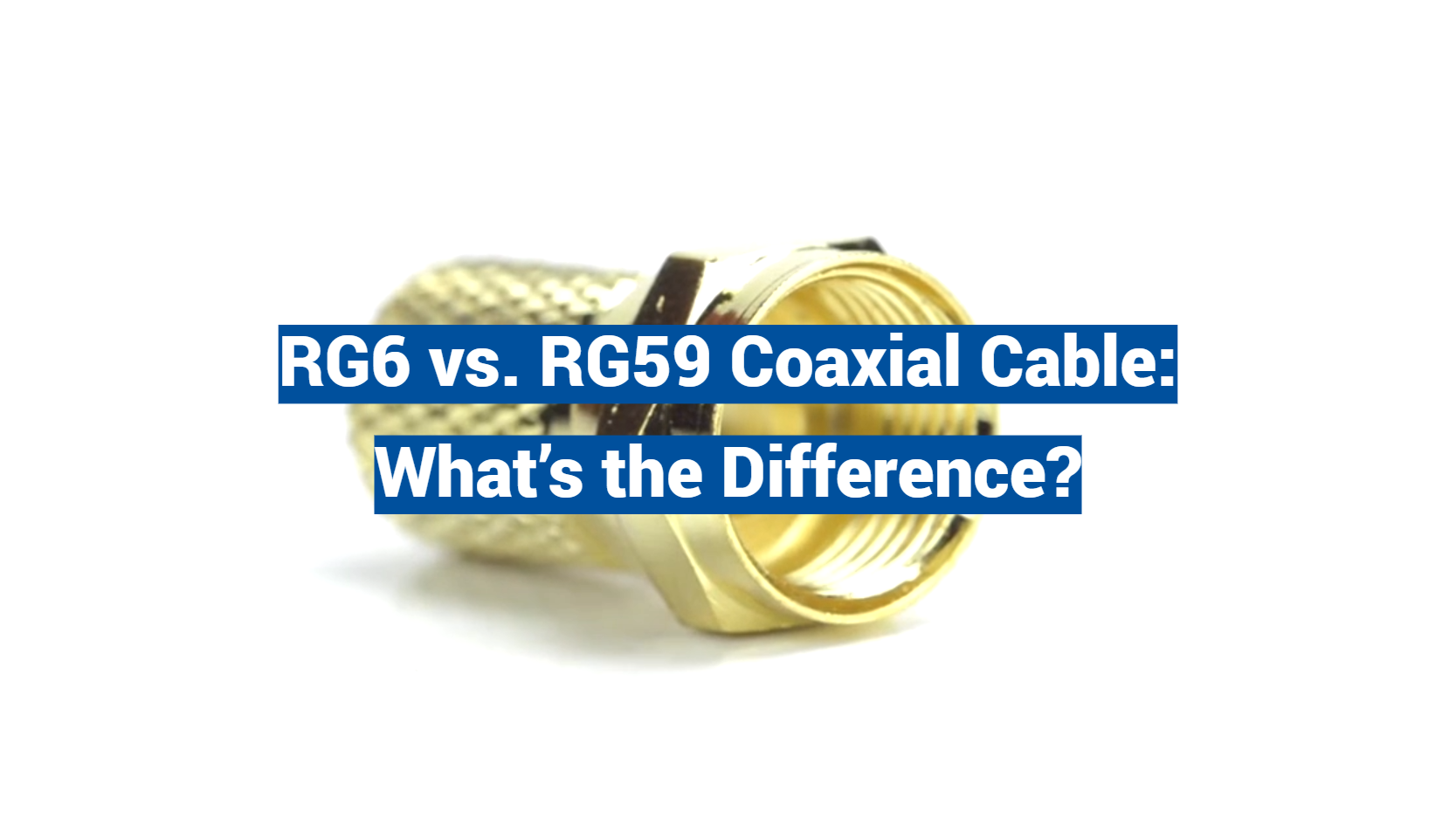In the vast world of telecommunications, choosing the right coaxial cable can be quite a challenge. With so many options available, it’s easy to get lost in the jumble of technical jargon. However, two options stand out among the rest: RG6 and RG59 coaxial cables. These two cables have established themselves as the kings of connectivity, revolutionizing the way we transmit signals. This blog post will embark on a journey to unravel the mystery behind RG6 and RG59, exploring their differences, strengths, and applications. So, grab your popcorn and get ready for a fascinating comparison of the most popular coaxial cable options on the market!
What is a Coaxial Cable?

Coaxial cables are also used in the automotive industry to carry power and data signals between electronic components. These cables offer superior shielding compared to other types of wiring as they have a higher conductivity than twisted-pair wiring. This means they can provide better protection against electromagnetic interference and require less power to transmit signals over longer distances.
The coaxial cable is an important part of many communication systems, as it provides a highly reliable and cost-effective way of connecting devices such as televisions, computers, and routers. It also offers a higher bandwidth than traditional copper wires which allow for faster data transmission. With the increasing popularity of digital television, coaxial cables have become an important part of home entertainment systems as they provide high-definition video and audio signals with minimal interference.
Overall, a coaxial cable is an essential component in many communication systems and offers reliable, cost-effective connections that provide superior shielding and higher bandwidth than other types of wiring. With its increasing popularity in the home entertainment industry, it is sure to remain a popular choice for many years to come [1].
First, What does RG for coaxial cable mean?
RG for coaxial cable stands for Radio Guide. This type of cable is designed to provide a consistent and reliable signal for radio-frequency applications such as television, satellite, and internet connections. Coaxial cables are often used in homes or businesses to provide a connection between the source and the receiver, whether it’s a TV, satellite dish, or modem.
Coaxial cables offer several advantages over other types of cable. They are capable of carrying signals at higher frequencies than most other types of wire, and they can also transmit data over longer distances without significant signal loss. Additionally, coaxial cables are less susceptible to interference from outside sources, such as lightning strikes or power lines. This makes them ideal for use in areas where interference is a concern.
In addition to providing a consistent and reliable signal, coaxial cables are also very durable, making them perfect for use in outdoor installations or other locations with harsh conditions. They are often rated for up to 20 years of continuous use and can withstand extreme temperatures without breaking down. This makes them an ideal choice for long-term applications.

Construction of RG-6 vs RG-59
Conductor
The RG-6 cable, with its larger and thicker 18 AWG conductor, offers several advantages over the RG-59 cable. The increased conductor size allows for better signal transmission, especially in high-frequency applications where lower impedance levels are required. This is achieved by utilizing a thicker copper wire, which provides improved conductivity and reduced signal loss.
Additionally, the RG-6 cable features an aluminum braid shield that surrounds the center conductor, offering enhanced protection against interference from external sources. This shielding ensures a cleaner and more reliable signal, making it an ideal choice for demanding audiovisual and telecommunications applications.
Insulation
The insulation on the RG-6 cable is not only thicker but also of higher quality compared to the RG-59 cable. This superior insulation provides enhanced protection against interference, ensuring a more reliable signal transmission. Moreover, the insulation of RG-6 cable possesses a higher dielectric constant, which effectively minimizes signal losses caused by capacitive effects. Its ability to handle higher temperatures makes it exceptionally suitable for installations in areas prone to extreme temperature conditions. With its superior insulation and robust design, the RG-6 cable guarantees optimal performance and durability in various applications.
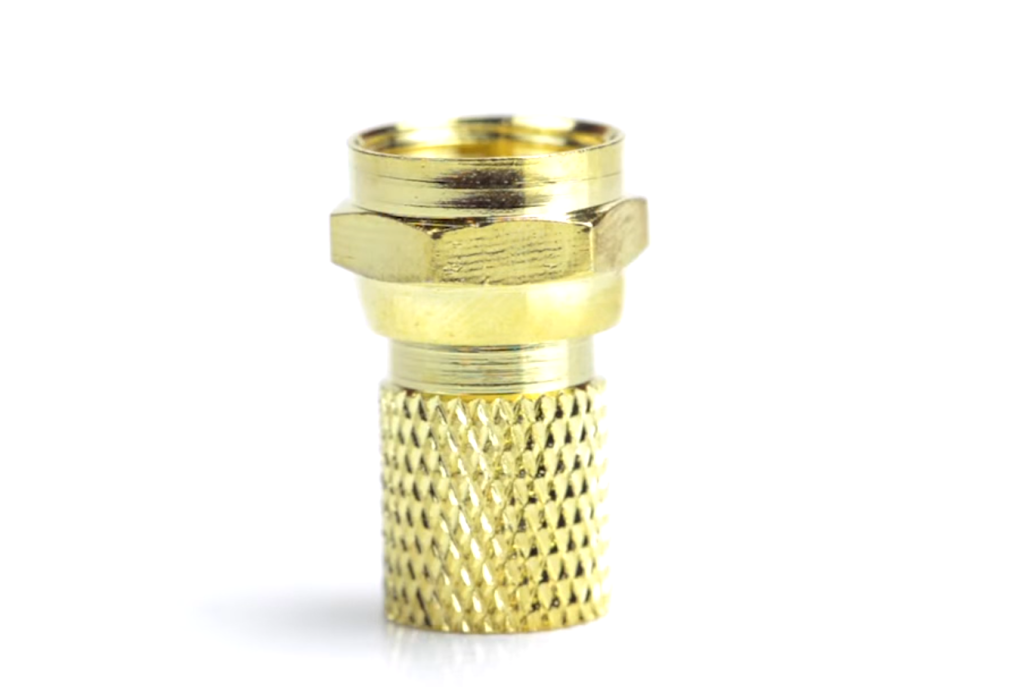
Jacket
The jacket on the RG-6 cable is thicker and tougher than its RG-59 counterpart, making it more resistant to damage from handling and environmental elements. This makes the RG-6 an ideal choice for outdoor applications, as it can better withstand wear and tear. Additionally, the jacket is made from a UV-resistant material, making it suitable for long-term outdoor use and providing enhanced protection against sun damage. The RG-6 cable can also be used in areas with high levels of moisture or humidity thanks to its waterproof design.
Shielding
The RG-6 cable, renowned for its superior performance, boasts a quad-shield design consisting of four layers of aluminum foil and braid shielding. This meticulously engineered shielding not only offers enhanced protection from interference but also guarantees optimal signal transmission even in highly electromagnetically noisy environments. Moreover, the quad-shield design effectively minimizes the risk of crosstalk between adjacent cables, making it the perfect choice for installations where multiple cables are being run side-by-side. With its exceptional design and cutting-edge technology, the RG-6 cable ensures unparalleled reliability and performance in any application.
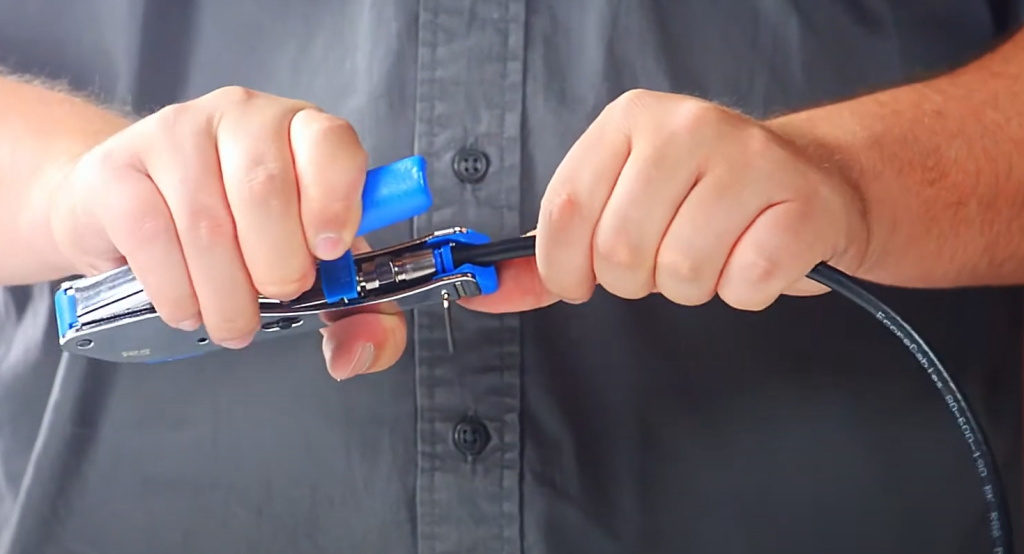
Applications
Thanks to its superior signal transmission capabilities, robust construction, and versatile design, the RG-6 cable is ideal for a wide range of applications. It is commonly used for digital video transmission in CATV systems, satellite TV installations, high-speed internet connections, multimedia networks, and CCTV surveillance systems. Additionally, the RG-6 cable is often used for digital audio transmissions in recording studios and other professional audio applications. With its exceptional performance, reliability, and durability, the RG-6 cable is an excellent choice for any audiovisual or telecommunications installation [2].
Performance of RG-6 vs RG-59
Bandwidth
The RG-6 cable, known for its superior bandwidth, surpasses the RG-59 cable in enabling users to achieve lightning-fast data transmission and reception. With its enhanced speed capabilities, the RG-6 cable proves invaluable in various applications, particularly those requiring swift data transfer, such as high-quality video streaming services and digital television. When utilizing an RG-6 cable, data transmission rates of up to 115 Mbps are achievable, while the RG-59 cable lags behind with a maximum of only 20 Mbps. This significant disparity in performance highlights the undeniable advantage of opting for the RG-6 cable in scenarios where speed is of paramount importance.
Attenuation
In addition to its superior bandwidth, the RG-6 cable also diminishes signal degradation and attenuation. Due to its large gauge and coiled interior conductor, the RG-6 cable can minimize both interference and signal loss more effectively than its counterpart. This allows the RG-6 cable to handle strong signals over significantly longer distances compared to that of the RG-59 cable. As such, users can enjoy a clearer connection with greater reliability when utilizing the RG-6 cable in their applications.
Frequency Range
The RG-6 cable is also able to provide a much larger frequency range than the RG-59 cable. This enables users to enjoy high-fidelity audio and video quality with greater accuracy and clarity. The increased frequency range of RG-6 also ensures that users are able to shift between higher and lower frequencies when necessary, thus allowing for more flexibility in their applications. Furthermore, the RG-6 cable is also better equipped to handle more complex systems, as its larger frequency range can accommodate multiple signals at once.
Durability and Flexibility
RG-6 cable is more durable than RG-59 due to its thicker outer sheath which provides better protection against physical damage such as cuts or kinks. Its flexibility also makes installation easier in tight spaces and around corners. This can be especially important for users who require a cabling system that can be rearranged or moved without needing to be replaced entirely. In addition, RG-6 is less prone to corrosion and provides better electrical shielding than RG-59, allowing it to last longer in more demanding environments.
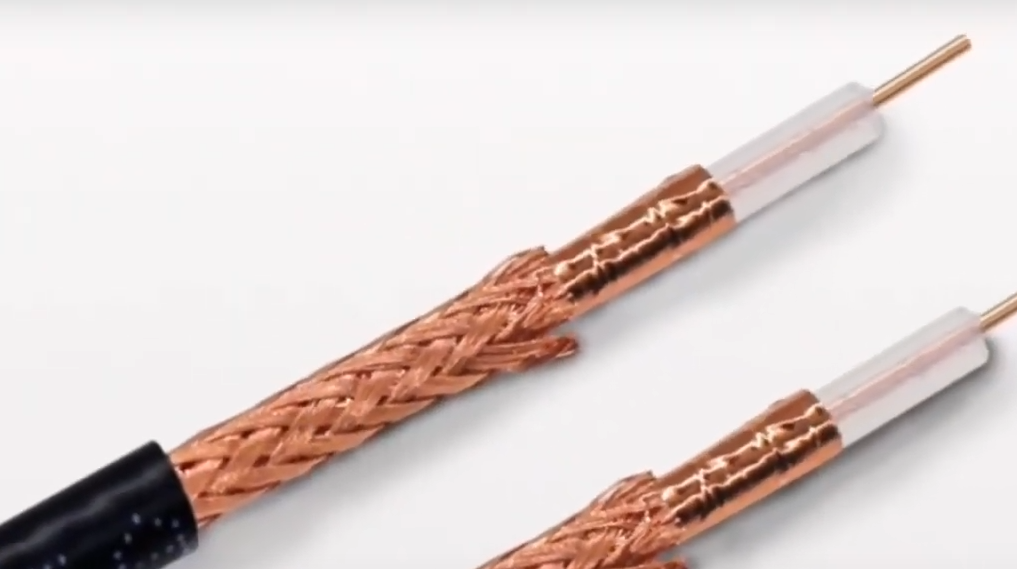
The price difference in RG-6 vs. RG-59
When it comes to the difference in price between RG-6 and RG-59, there is a considerable variation depending on the type of cable you choose. Generally, RG-6 is more expensive than RG-59 due to its better signal performance and greater durability. It also has a thicker outer jacket which can protect against interference more effectively than its thinner counterpart. Additionally, RG-6 is often rated for higher frequencies than RG-59 which can make it better suited for certain applications.
However, other factors can affect the price difference between these two types of cables. For example, the length of cable you need and the type of connectors used on each end can impact how much you pay when comparing RG-6 to RG-59. Furthermore, the price of RG-6 can also depend on whether you’re buying it pre-made or making your own custom cables.
Finally, when deciding between these two types of cable, it’s important to consider what type of application you are using it for and how much performance and durability you need from the cable. Depending on your needs, the price difference between these two types of cables may be worth it in the end.
So, on average, RG-6 cable can cost approximately double that of RG-59 cable, but it is important to consider the application and your budget when making a decision. Ultimately, if you need better performance and durability then RG-6 may be the right choice for you.
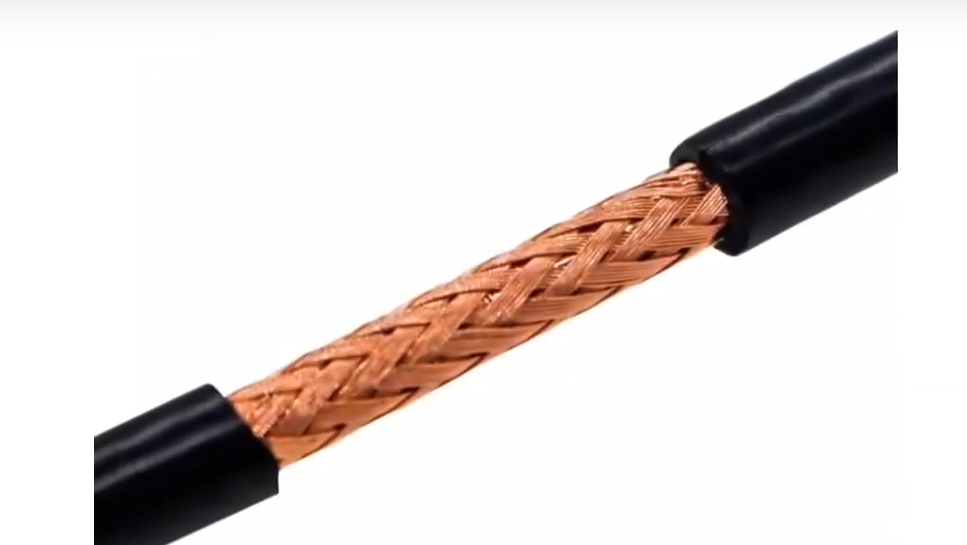
How to choose the right Coaxial Cable?
When choosing the right coaxial cable for your application, there are several important factors you should consider:
- Cable Type – Coaxial cables come in a variety of types, including RG59, RG6 and RG11. The type you choose will depend on the frequency range that needs to be supported. For example, RG11 can handle higher frequencies than RG59.
- Cable Length– The length of the coaxial cable will affect both the signal strength and speed. Longer cables tend to have more losses, so it is important to choose a length that will provide adequate performance without sacrificing signal quality.
- Connector Type – Coaxial cables come with various connector types including F-type, RCA and BNC. The type of connector you choose should be compatible with the devices that will be connected to it.
- Shielding– Shielded cables are designed to protect against electromagnetic interference (EMI) and radio frequency interference (RFI), which can degrade the signal quality. It is important to select a cable with adequate shielding for your application.
In addition to these factors, it is important to consider the cost and availability of the coaxial cable you are considering. Make sure that the cable is readily available and that it fits within your budget. With careful consideration, you can select a coaxial cable that will meet your needs.

FAQ
Should I use RG59 or RG6?
The type of coaxial cable you should use will depend on the application and your specific needs. Generally, RG6 is able to handle frequencies up to 3GHz while RG59 can only handle up to 1GHz. If you are using the cable for something like a satellite or CATV system, then using RG6 is generally recommended. If your application does not involve higher frequencies, then RG59 may be sufficient.
What is the difference between a connector and an adapter?
A connector is used to physically join two cables together, while an adapter provides a bridge between two signals that may not otherwise be compatible. A coaxial cable connector is composed of male and female ends that connect the cable together, while adapters are designed to join two different types of cables together, allowing them to transmit signals. For example, an F-type adapter is used to join an F-type cable to a BNC cable or vice versa.
What is the best way to test a coaxial cable?
The best way to test a coaxial cable is with an Ohm meter and continuity tester. When testing a coaxial cable for continuity, an Ohmmeter should be used to measure the resistance of the cable, while a continuity tester is used to ensure that there is no break in the cable. Additionally, it may also be beneficial to use a signal strength meter to verify that the signal being transmitted through the cable is within acceptable levels.
How can you tell the difference between RG59 and RG6?
RG59 and RG6 cables look quite similar, but some key differences can help you tell them apart. The most obvious difference is the size; RG6 is much larger than RG59. Additionally, if you look closely at the ends of each cable, you will notice that one has a solid copper conductor while the other has a braid covering it. The braid is indicative of RG59, while the solid conductor indicates RG6.
What is the maximum distance for a coaxial cable?
The maximum recommended length for a single run of coaxial cable will depend on the type and gauge of the cable. For instance, an RG6 quad-shielded coaxial cable can typically support runs up to 500 feet in length, while an RG59 coaxial cable can only support up to 250 feet. To ensure proper signal transmission, it is recommended that you keep the run of cable as short as possible.
What is the difference between RG6, RG11 and RG59?
RG6 is a larger cable than both RG59 and RG11, allowing it to carry higher frequencies and greater distances. It is also typically comprised of multiple layers of shielding, which helps minimize interference from outside sources. RG59 is an older-style cable with only one layer of shielding and low-frequency capabilities. Finally, RG11 is the largest coaxial cable available and is typically used for long runs, such as in CATV applications.
Is it better to use a coaxial cable splitter or an amplifier?
It really depends on the application and your specific needs. If you are looking to split a single signal into multiple outlets, then using a splitter is generally recommended. However, if you need to boost the signal strength and/or distance of the transmission, then an amplifier may be a better solution. Additionally, if you need to boost the signal over a long run of cable, then using both an amplifier and splitter may be necessary.
What is RG59 cable used for?
RG59 cable, also known as coaxial cable, is a versatile option commonly utilized in various applications. It is particularly well-suited for short-run scenarios, including CCTV or satellite systems, where a higher frequency signal is not required. Additionally, RG59 finds widespread usage in residential homes for cable television and internet services.
One of the key advantages of RG59 cable is its compact size, allowing for effortless routing through walls and tight spaces. This feature makes it an ideal choice for installations where flexibility and convenience are paramount. Whether you’re setting up a surveillance system or seeking reliable connectivity, RG59 cable offers the reliability and ease of use you need.
What type of coaxial cable should I use for my antenna system?
The type of coaxial cable you should use for your antenna system will depend on the frequency of your signal and the length of the run. For short runs, such as under 20 feet, RG59 is generally sufficient. However, if your run is longer than 20 feet or requires a higher frequency signal, then using RG6 or RG11 is recommended. Additionally, it is advisable to use a quad-shielded or double-shielded coaxial cable for outdoor installations in order to reduce interference and provide better signal strength.
What measures can I take to improve the signal strength of my coaxial cable?
There are several steps you can take to improve the signal strength of your coaxial cable. Firstly, make sure the connectors are securely connected to both ends of the cable. Replace any cables that have breaks or cracks with newer ones. Additionally, using a higher-quality coaxial cable and an amplifier can help boost signal strength over longer runs. Finally, if your system is located outdoors, make sure to use a shielded or insulated coaxial cable to reduce interference.
How do I install a coaxial cable connector?
Installing a coaxial cable connector is relatively simple. First, you will need to remove the connector body from the cable. To do this, use a pair of pliers or wire strippers to loosen and remove any outer shielding that is covering the cable. Once that is done, you can unscrew the connector body and slide it onto the exposed ends of the coaxial cable. Securely tighten the connector using pliers or a wrench before connecting it to the device you are using. Finally, ensure that the cable is firmly seated in the connector and test to make sure it is secure before you use it.
What types of coaxial connectors are available?
There are several different types of coaxial connectors available, including F-type, BNC, SMA and N-type. The type of connector you need will depend on the type of coaxial cable you are using, as well as the application. For instance, F-type connectors are commonly used for residential television and satellite systems, while BNC connectors are ideal for CCTV installations. SMA connectors are often used in wireless applications, while N-type connectors are typically reserved for outdoor installations.
Is RG59 OK for the Internet?
RG59 is not recommended for use with the internet. This type of coaxial cable has a single layer of shielding and low-frequency capabilities, which makes it unsuitable for transmitting high-speed data signals. For optimal performance, it is best to use RG6 or higher-quality cables when connecting to your internet service provider (ISP). These cables have multiple layers of shielding, allowing them to support higher frequencies and longer runs.
Additionally, it is important to make sure the connectors are securely attached to both ends of the cable. This will ensure that your connection is as secure and reliable as possible. Moreover, using a coaxial amplifier along with your coaxial cable can help boost signal strength and extend the range of your connection. By taking these measures, you can ensure that your internet connection is as strong and reliable as possible.
Conclusion Paragraph
RG6 and RG59 coaxial cables are both invaluable pieces of technology that have been used in the telecommunications and electronics industry for decades. RG59 is often considered to be the better choice due to its lower cost, increased flexibility, and longer distances between signal boosters. However, it is important to weigh all of your options when selecting a cable, as each type has certain advantages and disadvantages. Ultimately it will come down to the specific goals and needs of your project. With that being said, both types offer great quality and reliable performance for various applications.
Useful Video: The difference between RG59 & RG6 coax cables
References:
- https://www.techtarget.com/searchnetworking/definition/coaxial-cable-illustrated
- https://www.clooms.com/rg-6-vs-rg-59/
- https://blog.pasternack.com/coaxial-cable/12-tips-faqs-selecting-right-coaxial-cable/

